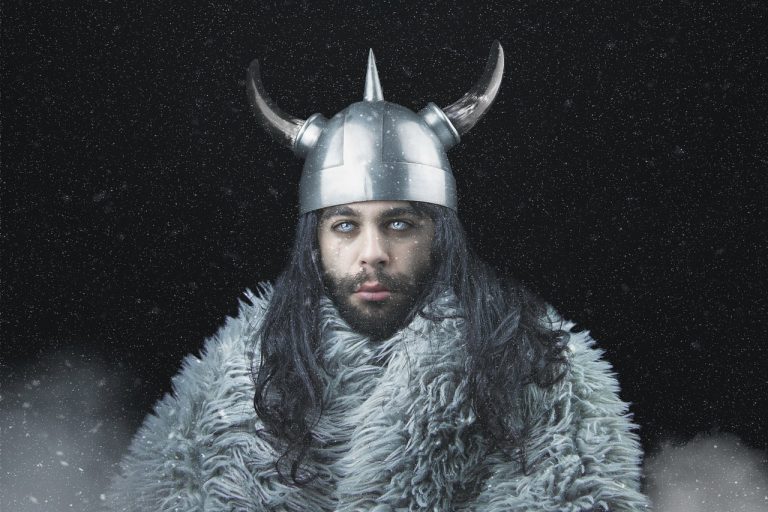Dispelling the Myth: Did Vikings Actually Wear Horned Helmets?
The image of a fierce Viking warrior charging into battle donning a horned helmet has captivated the imaginations of many and has become deeply ingrained in popular culture. However, it’s time to delve into the authenticity of this depiction and answer the lingering question: Did Vikings actually wear horned helmets? This article aims to explore the roots of this common misconception, backed by historical evidence and scholarly research, to separate fact from fiction.
Introduction to Viking History and Culture
The Vikings, hailing from Scandinavia (modern-day Norway, Sweden, and Denmark), were known for their prowess in exploration, trade, and warfare during the Viking Age (approximately 793–1066 AD). They traveled as far as North America to the west and the Middle East to the east, establishing a historical presence that is still studied and revered today.
Despite their rich historical impact, it is the image of the horned warrior that seems to dominate popular portrayals. But how accurate is this iconic symbol? Let’s take a closer look.
Tracing the Origin of the Horned Helmet Myth
The misconception that Vikings wore horned helmets likely sprouted during the 19th-century revival of interest in Norse culture. It was further popularized by costume designers in 19th-century opera productions, notably those by Richard Wagner. The visual spectacle of horned helmets may have been used to convey a sense of barbarism and wildness, traits that the Romantic era attributed to the Viking people.
Artistic liberties aside, historical evidence tells a different story. Archaeological findings from Viking graves and settlements show no trace of these fantastical helmets. Instead, the helmets that have been discovered are typically rounded or conical in shape, designed for functionality rather than flair.
Dissecting Historical and Archaeological Evidence
The few Viking helmets that have survived to this day are notably free of horns. For instance, the Gjermundbu helmet, unearthed in Norway and dating back to the 10th century, is currently the best-preserved example of Viking-age headgear. It features a rounded cap, a face mask, but notably, no horns.
The primary purpose of a helmet in battle is protection — to deflect blows from weapons. Horns would not only be impractical but could potentially catch an opponent’s blow, directing it towards the wearer’s head. Therefore, from a practical standpoint, a horned helmet would be more of a liability than an asset in combat.
Impact on Pop Culture and Public Perception
Despite the lack of evidence, the horned helmet has become an enduring symbol in depictions of Vikings in film, television, and literature. This representation persists, likely due to its powerful visual impact and the way it complements the popular narrative of Vikings as savage raiders.
Dispelling the Myth: Did Vikings Actually Wear Horned Helmets? It’s clear that while it makes for striking imagery, the horned helmet is a myth and not a historical reality. This misunderstanding underscores the larger issue of how historical accuracy can sometimes be sacrificed for dramatic or visual effect.
FAQs About Vikings and Their Helmets
Q: Why do people think Vikings wore horned helmets?
A: The myth likely originated from 19th-century art and was popularized by theatrical performances. Horned helmets were never used by Viking warriors in battle.
Q: What did authentic Viking helmets look like?
A: Authentic Viking helmets were typically made from iron and were conical or rounded in shape. They were designed to withstand blows from weapons during combat.
Q: Are there any true historical helmets with horns?
A: While ceremonial or ritual helmets with horns have existed in other ancient cultures, no evidence suggests that the Vikings used horned helmets in battle.
Q: How does popular media influence our understanding of history?
A: Movies, TV shows, and literature can significantly shape public perception of historical events and figures, sometimes prioritizing dramatic effect over factual accuracy.
Conclusion
In conclusion, the storied image of a Viking in a horned helmet, though captivating, is simply not true. Dispelling the Myth: Did Vikings Actually Wear Horned Helmets? reveals a gap between historical fact and popular fiction. By examining archaeological evidence and historical contexts, we find that the real Vikings, impressive as they were, did not wear horned helmets into battle. This exploration not only corrects a common historical misconception but also highlights the importance of seeking accuracy in our understanding of the past. Let’s continue to question and explore, peeling back the layers of myth to reveal the fascinating truths of history.


